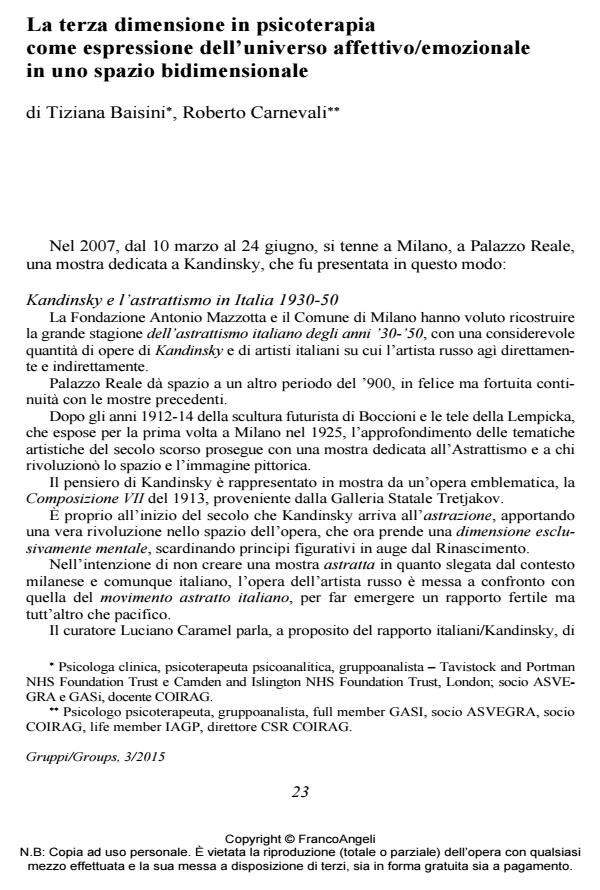The third dimension in psychotherapy as an expression of the affective/emotional universe in a bi-dimensional space
Journal title GRUPPI. Nella clinica, nelle istituzioni, nella società
Author/s Tiziana Baisini, Roberto Carnevali
Publishing Year 2017 Issue 2015/3
Language Italian Pages 15 P. 23-37 File size 408 KB
DOI 10.3280/GRU2015-003003
DOI is like a bar code for intellectual property: to have more infomation
click here
Below, you can see the article first page
If you want to buy this article in PDF format, you can do it, following the instructions to buy download credits

FrancoAngeli is member of Publishers International Linking Association, Inc (PILA), a not-for-profit association which run the CrossRef service enabling links to and from online scholarly content.
Communication in the contemporary world is characterized by the use of technological tools that allow a rapid and essential exchange, yet poor on the emotional level. Abstract art - Kandinsky being one of its main representatives - seems to dwell in a bi-dimensional space where the third dimension is created by the emotional bond between the artwork and those who look at it. Similarly with this, a series of clinical vignettes is offered by the authors to discuss the notion of third dimension in psychotherapy as the affective-emotional universe arising between psychotherapist and patient through their empathic bond. In child and adolescent psychotherapy the third dimension can be reached by using technological tools as a mediator object, since they are often perceived as an easier and safer communication channel than a direct patient- therapist relation, whereas in adult psychotherapy the third dimension can be experienced when the therapist acts as an image where the patient can mirror himself thus activating, in the relational space, those affective-emotional resources that the latter could not activate in his own world.
Keywords: Third dimension, affective-emotional universe, bi-dimensional space, technological tools, mediator objects, mirroring.
Tiziana Baisini, Roberto Carnevali, La terza dimensione in psicoterapia come espressione dell’universo affettivo/emozionale in uno spazio bidimensionale in "GRUPPI. Nella clinica, nelle istituzioni, nella società" 3/2015, pp 23-37, DOI: 10.3280/GRU2015-003003